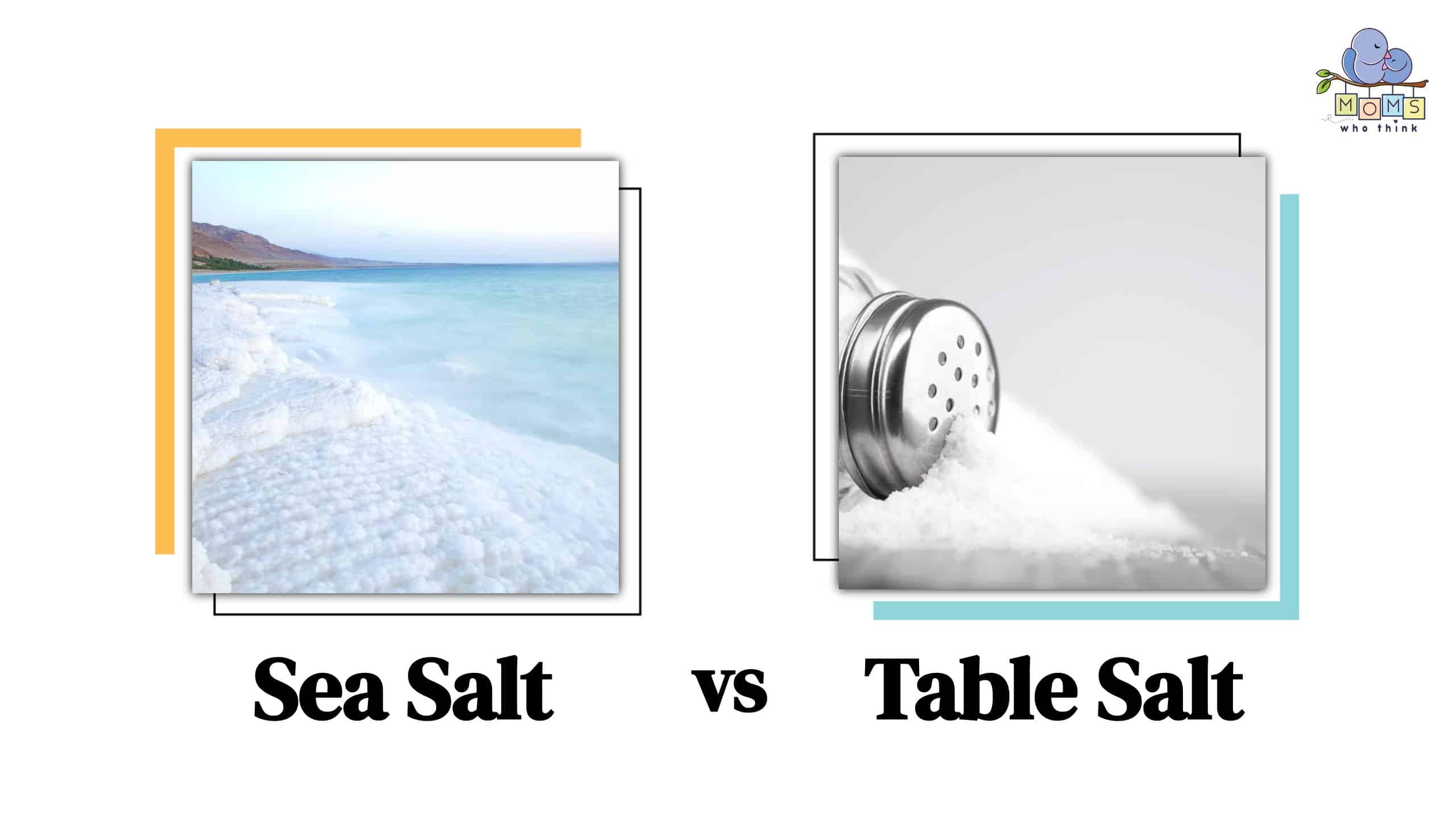Salt is a pantry staple in most if not every, pantry. It has many uses, both culinary and around the home. Many people enjoy simply using table salt. It is quick, easy, and affordable. It is excellent for seasoning foods that may be bland and adds extra nutrition vital for your health. Other people prefer a different type of salt, like sea salt or Himalayan salt. With the different types available, asking about the differences between the salts is only normal. This article will discuss the differences between sea salt and table salt. What are the texture, flavor, and processing differences? Also, is one actually healthier for you?
Before discussing the differences, let's dive into the benefits of salt in general.
Benefits of Salt
What exactly is salt? Well, salt is sodium chloride.
It is crucial to have sodium in your diet. This is because it is beneficial in helping promote digestive health, muscle function, and salt can balance fluids!
Salt has been around for a long time and has been used as an excellent food preserver for centuries. This was especially vital before the invention of the freezer came around.
There are risk factors, however, with eating too much or too little sodium. One of those risk factors involves our heart health when consuming too much salt.
Yet, salt shouldn't be avoided altogether. Salt is an important addition to our health, and daily consumption can be beneficial. Now, what is the difference between sea salt and table salt?
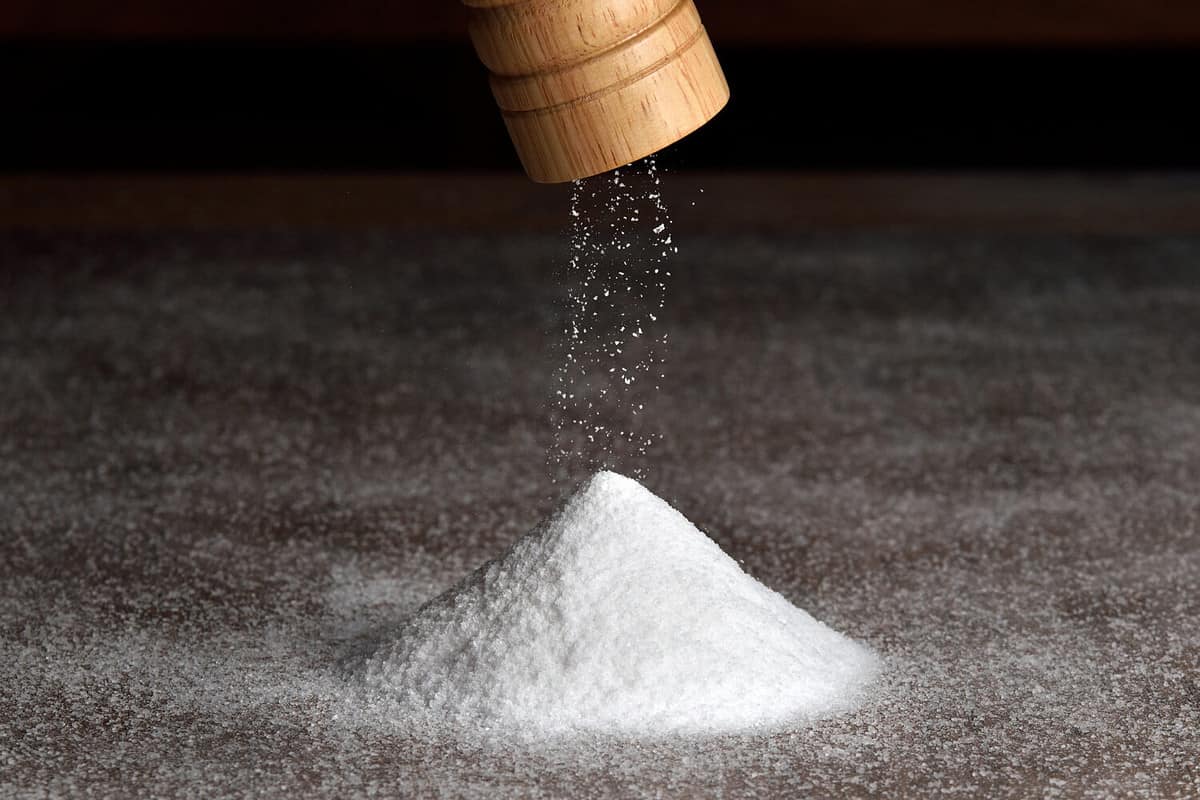
Table salt is in pantries worldwide. It can add flavor to any meal, bring a bland dish to life, and also has many household uses.
©Coryn/Shutterstock.com
Sea Salt vs. Table Salt: What are the Differences?
Sea salt and table salt are similar in that they are both sodium chloride. There are some key differences between the two, though. These differences are in the textures, flavor, and processing.
The main difference is where each one comes from. Sea salt sounds exactly as it states; it comes from the sea. The seawater undergoes evaporating, leaving behind salt. It does undergo processing to make it easier to consume.
Table salt, on the other hand, is mined underground. Then it undergoes processing. During the processing, the goal is to make table salt fine and pure. Therefore, most of the minerals are no longer present.
Another difference lies in the texture of each salt. Sea salt is crunchier than table salt. It is also larger and can come in shades different from white, including pink and gray. On the other hand, table salt is fine and easily integrates into different meals. This means the flavor remains, yet the texture isn't prominent. This is why table salt is one of the most used salts worldwide.
Sea Salt vs. Table Salt Nutritional Value
One of the common misconceptions between sea salt and table salt is that sea salt is the healthier of the two. One of the reasons for this thought is that table salt has many minerals taken out during processing. However, the truth is both sea salt and table salt are very close to having the same nutritional value.
After processing, table salt is fortified with iodine. This is an important step because iodine helps our bodies make the thyroid hormone, which our bodies can't make on their own. Table salt is excellent for helping balance our thyroid hormones. Therefore, table salt can be helpful if your body is low in this hormone.
Sea salt also has excellent advantages. It is great for skin remedies in a warm bath. Additionally, magnesium in sea salt is excellent for soothing dry skin.
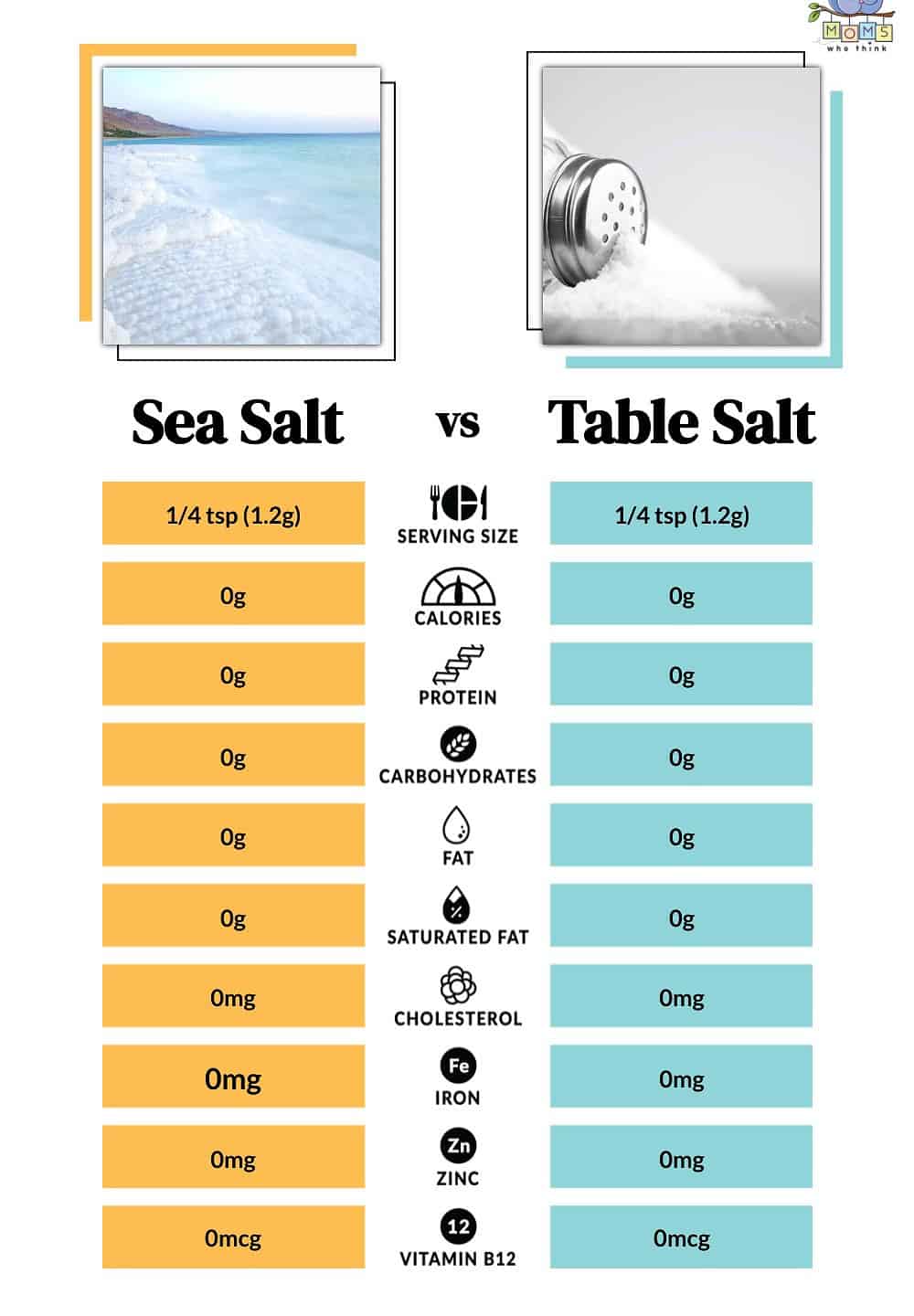
©
What is Sea Salt?
Remembering where sea salt comes from is easy because it's in the name. Sea salt is when salt water is evaporated, leaving sodium chloride behind. Sea salt also undergoes less processing than table salt.
The fact that it doesn't undergo as much processing means that minerals in sea salt are still present. These vital minerals include calcium, potassium, and iron. However, they are trace minerals, meaning there's not much in each grain.
Sea salt adds a crunchier texture to foods and a saltier flavor. Food is not the only way people use sea salt, though. Sometimes sea salt is added to scrubs and baths to take care of the skin-relieving elements that it provides.
There are claims that sea salt is one of the healthier salt versions. One reason is that the processing is less in-depth than table salt. Yet, the research doesn't support the claims. Sea salt does have the ability to help relieve skin conditions, balance digestion and help keep you hydrated. Nevertheless, it is important to remember these benefits can come from using salt in general.
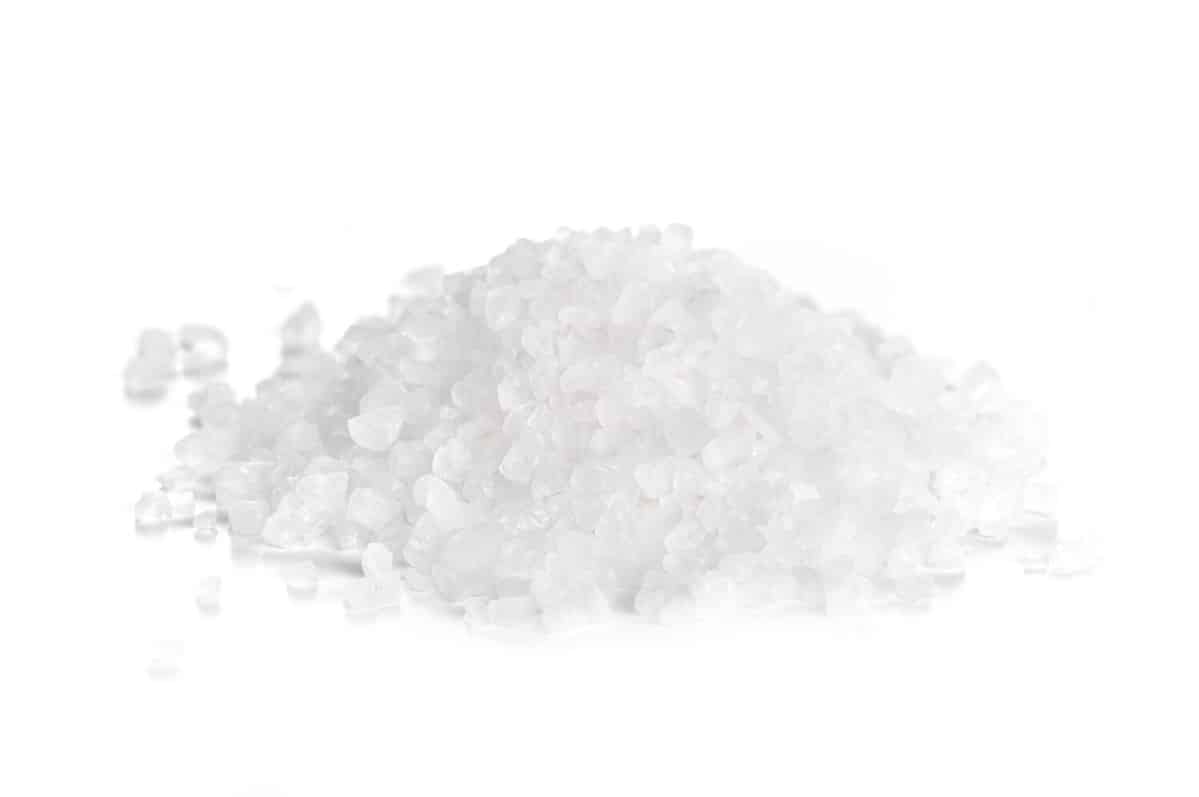
When the seawater evaporates, what is left are large crystals of sodium chloride. Sea salt has an uneven and coarse texture. The prominent crystals add more texture to dishes as well.
©djero.adlibeshe yahoo.com/Shutterstock.com
What is Table Salt?
Table salt is commonly in household pantries and is a staple in most meals. The table salt we know is mined from underground. The processing method is in-depth and strips the salt of much of its minerals. The reason for this is to make it easier to consume. Table salt is likewise strengthened with iodine, a vital mineral in our daily health.
The processing of table salt makes it fine and pure. This is one reason why it is common to think table salt offers less nutritional value. However, table salt still offers benefits that can be vital for everyday life.
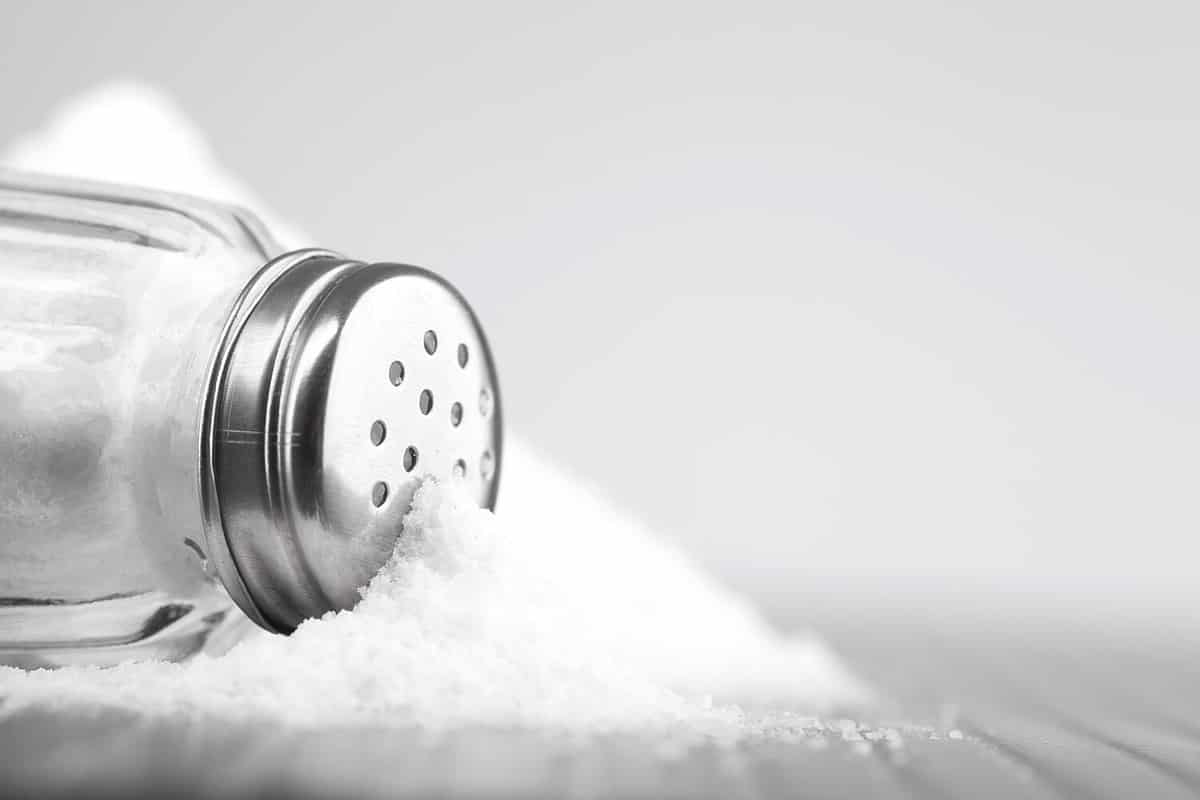
Table salt is commonly used to flavor meals and bland food. It has a subtle yet sometimes bitter flavor.
©Miro Novak/Shutterstock.com
Can You Substitute Sea Salt for Table Salt?
Yes, it is possible to substitute sea salt for table salt. Sometimes one may substitute salt for the other type when they prefer a particular texture and flavor. Other times, it's simply what they have on hand. The texture and flavor may change slightly, however, not to the point where your meal is drastically different.
Uses for Sea Salt and Table Salt
Salt is an important mineral that is used in many various ways. The primary use is with food. Salt can bring a flavor and texture to your foods when it is bland, bringing the dish to life. It also adds important minerals that we need every day. Salt has also been a food preserver for a very long time.
Furthermore, salt has household uses. Often you can find salt as an added ingredient in bath salts, body scrubs, and baking soda. It melts ice in winter, relieves bee stings, and destroys poison ivy. Salt is a vital element in our everyday life with many functional uses!
One Last Note
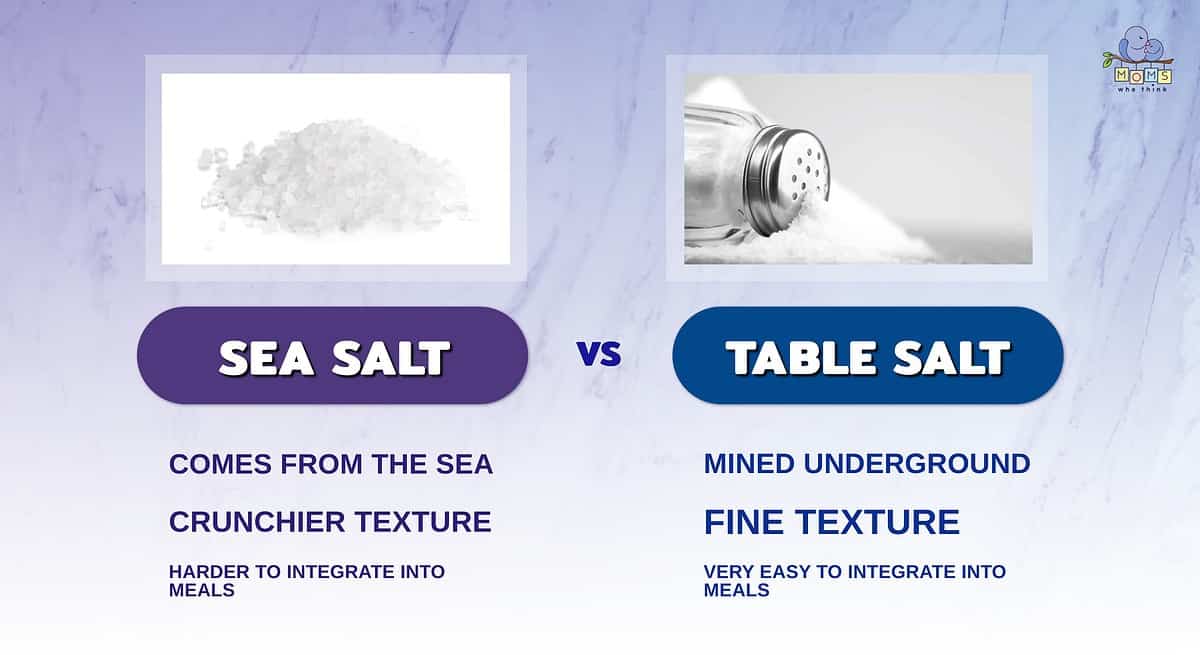
- Sea salt has a crunchier texture than table salt, which is known for being very fine.
- Because of its larger salt chunks, sea salt is harder to incorporate into a dish.
- Like its name suggests, sea salt comes from the sea! Table salt is mined from underground salt mines.
When it comes to salt, numerous important uses make it necessary in our daily lives. Salt can help us balance our digestive health. It also helps keep us hydrated! Salt has been necessary for daily living for centuries, even going far enough back to help preserve food, which was essential for daily living then and even now is beneficial.
When it comes to sea salt and table salt, it is often thought that sea salt is healthier than table salt. The fact is, this isn't necessarily true. Both sea salt and table salt offer similar nutritional value and have uses that can be interchangeable. The main difference between the two is where the salt comes from. Sea salt comes from seawater that has been evaporated. Table salt comes from the ground. They both undergo processing; however, table salt goes through more processing.
After table salt goes through processing, it becomes a fine and clean mineral often used to flavor a dish. Sea salt is also for flavoring but has a crunchier texture. Whether you prefer table salt or sea salt depends on your preference! The truth is, either one is good for your health in moderation.
Looking to try out a new recipe? We've got a great one right here:
Print
Mustard Seasoned Chicken Strips
- Yield: 4 servings
Ingredients
⅓ cup egg substitute
1 Tablespoon prepared mustard
1 garlic clove, minced
¾ cup dry bread crumbs
2 teaspoons dried basil
1 teaspoon paprika
½ teaspoon salt
¼ teaspoon pepper
1 pound chicken tenderloins
Instructions
1. In a shallow bowl, combine the egg substitute, mustard, and garlic.
2. In another shallow bowl, combine the bread crumbs, basil, paprika, salt, and pepper.
3. Dip chicken in egg mixture, then roll in crumbs.
4. Place on a baking sheet coated with cooking spray. Bake at 400° for 10 15 minutes or until golden brown and juices run clear.
Nutrition
- Serving Size: 3 ounces cooked chicken
- Calories: 188
- Sodium: 525mg
- Fat: 2g
- Carbohydrates: 14g
- Fiber: 1g
- Protein: 30g
- Cholesterol: 67mg
Salt Posts
- MSG vs. Salt: Chemical Differences, Popular Uses, And Health Considerations
- How to Use Sea Salt vs. Rock Salt in Foods
- Onion Salt vs. Onion Powder: Is There a Difference?
- Iodized Salt vs. Salt: Key Differences
- Himalayan Salt vs. Sea Salt: The Notable Differences
